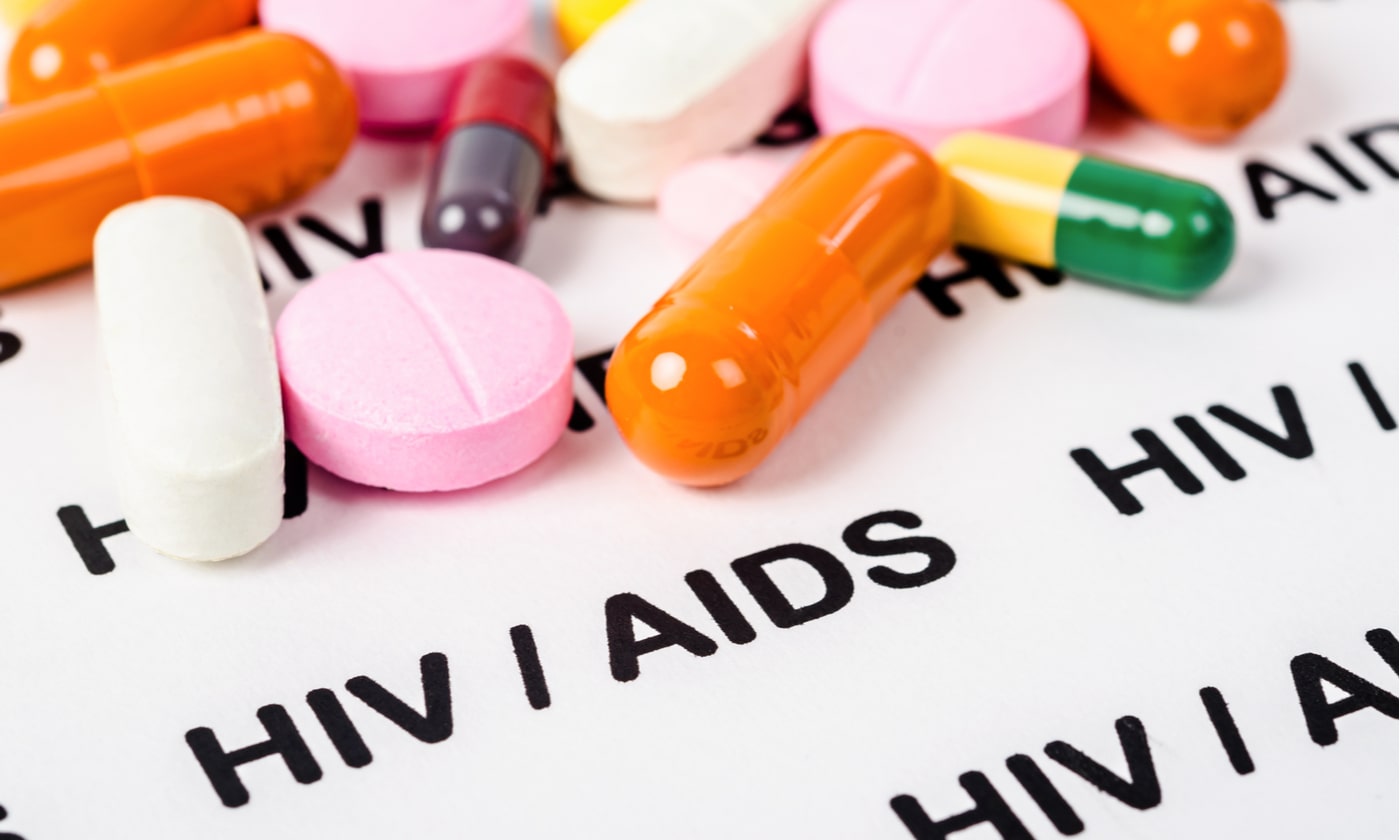At the end of 2020, there were an estimated 37.7 million people living with HIV around the world, with over two-thirds of the cases occurring in the WHO African Region (1). In the United States, 36,801 new cases of HIV were diagnosed in 2019, with an estimated 1,189,700 people predicted to have HIV at the end of 2019. Yet, about 13% of HIV-positive people in the U.S. are unaware of their HIV status (2).
Major medical advances have drastically improved life for people with HIV, but there is still a lot of misinformation about HIV and AIDS. In this article, we debunk 10 common myths about HIV and provide you with the facts instead.
#1 Touching someone with HIV puts me at risk of catching HIV
This is one of the biggest misconceptions about HIV. HIV can only be passed from one person to another via specific bodily fluids:
- Blood
- Semen (including pre-cum)
- Vaginal fluid
- Rectal fluid
- Breastmilk
And it is necessary for the infected bodily fluid to enter the blood of another person for transmission to occur. This can be through:
- Unprotected sex (both rectal and vaginal, but only very rarely through oral sex)
- From mother to child during pregnancy, childbirth, or breastfeeding
- Sharing needles, syringes, or other drug-injection equipment
This means that it is usually not possible to catch HIV from kissing and hugging, sharing food, insect bites, toilet seats and bathing, sneezes and coughs, or sweat.
Nowadays with thorough testing of donated organs and tissues, it is also very unlikely that HIV will be transmitted from blood transfusions, blood products, or organ and tissue transplants.
#2 Washing after sex will prevent me from catching HIV
No, washing immediately after sex will not prevent the transmission of HIV if bodily fluids have already been exchanged. Other common myths about HIV prevention include a belief that pulling out prior to ejaculation or being on the contraceptive pill will prevent HIV transmission. Pre-ejaculate (pre-cum) can also contain the HIV virus so transmission can still occur. The contraceptive pill in no way protects against HIV (or any other STD for that matter!). It is for preventing pregnancy, but not for preventing infectious disease transmission.
The only ways to really protect yourself from catching HIV through sex are by using condoms or taking pre-exposure prophylaxis (PrEP). PrEP is a prescription medication that is very effective at preventing HIV when taken exactly as prescribed. It is also important to get tested and treated for other STDs, as if you have another STD it can increase your chance of catching HIV.
#3 HIV has very distinct symptoms
Some people believe that it is easy to spot those with HIV as they have distinct disease symptoms. Or they think that they will know if they have caught HIV by experiencing the symptoms themselves.
However, the early symptoms of HIV are actually not at all easy to spot. Some people may not even show any symptoms at all in the early stages. While others just display general symptoms typical of many other types of infections, e.g., fever, fatigue, general malaise.
The only way to accurately determine if you have caught HIV is to get tested. Saliva testing is an option but testing of blood is more accurate and detects an HIV infection at a much earlier time point post-exposure. We offer a 4th generation HIV test that detects both HIV antigen and HIV antibodies from just a simple finger-prick blood sample.
#4 I will definitely catch HIV if I have sex with someone with HIV
This is another false belief. Correct condom use and PrEP prevent HIV transmission. In addition, antiretroviral (ART) medication is very effective at controlling the viral replication of HIV. Although ART does not cure HIV, it can ensure that the amount of virus in the blood (viral load) is very low. HIV viral suppression is defined as less than 200 copies of HIV per milliliter of blood and ensures that HIV transmission through sex does not occur (2).
#5 HIV always leads to AIDS and death
In the past, this statement was true, as untreated HIV typically develops into AIDS after about 10 years. AIDS patients often display the symptoms that many people associate with HIV, including rapid weight loss and skin discoloration, and are very susceptible to other health complications, including pneumonia, tuberculosis, and certain cancers. And it is these opportunistic infections and cancers that lead to the death of most untreated AIDS patients within three years.
Nowadays, effective ART medication can reduce the replication of HIV in the blood to an undetectable level, meaning that HIV patients can live relatively normal lives and their HIV never develops into AIDS.
#6 Only men who have sex with men can catch HIV
False. Although men who have sex with men account for the most cases of HIV in the U.S. (65% in 2019), HIV can also be transmitted through heterosexual contact (23% of cases in 2019) (2).
During anal sex, the risk of catching HIV is much higher in the receptive partner, but transmission to the insertive partner is still possible. During vaginal sex, either partner can get HIV.
Oral sex is also a potential transmission pathway but the risk is a lot lower than anal or vaginal sex. Generally other factors must also be present for transmissions to occur, such as mouth ulcers, bleeding gums, and the presence of another STD (2).
#7 If myself and my partner are both HIV-positive, there is no need to use protection
This statement only holds true if both partners are on ART and maintaining viral suppression and have an undetectable viral load, which prevents HIV transmission. If both partners do not have viral suppression, it is very important to use condoms during every sexual encounter. This is because there are different strains of HIV. If you each are infected with a different strain, it is possible that you (or your partner) could become infected with two different strains. This is known as HIV superinfection and may cause problems with treatment and cause some people to get a lot sicker a lot faster, particularly if the new strain is resistant to the ART medicine that was controlling the original HIV strain (2).
#8 HIV can be cured
Unfortunately, there is still no cure for HIV. Although ART significantly reduces the amount of HIV in the blood and can achieve viral suppression in most people, it does not eliminate the virus completely. ART medications must be taken as prescribed for life otherwise the viral load will increase and can eventually lead to AIDS.
Some people choose to take alternative medicines (e.g., herbal medicines) with the misconception that they will provide a cure for HIV. However, herbal remedies do not work, and can even interfere with the effectiveness of ART medicines if taken concurrently.
#9 An HIV diagnosis means that I can never safely have a child
Thankfully an HIV diagnosis is not the death sentence it used to be, nor does it prevent most people from making a family.
If an HIV-positive mother-to-be maintains viral suppression throughout her entire pregnancy (including labor and delivery), as well as giving HIV medications to the baby for the first 4-6 weeks, it can reduce the risk of HIV transmission to less than 1% (2).
In addition, an HIV-positive man can still safely father a child, by ensuring that the HIV is not transmitted to his female partner. This is through keeping an undetectable viral load with ART medication. The female partner may also opt to take PrEP to further reduce the risk of catching HIV during sex.
#10 A negative HIV test result means that I definitely don’t have HIV
Unfortunately, this is not always the case. Even with advanced laboratory testing techniques, there is still a “window period” post-exposure where an HIV-positive person will still test negative on an HIV test. This is because a certain level of the virus is required in the blood before it is detectable by HIV tests.
The 4th generation HIV test that we offer can usually detect the p24 antigen from HIV within 18–45 days weeks post-exposure. However, in some cases, an HIV infection may not be detected from a finger-prick blood sample until 90 days post-exposure. Therefore, a false-negative test result may occur within the first three months. Retesting after three months is recommended.
If a potential exposure is suspected, post-exposure prophylaxis (PEP) is available as an emergency medication to reduce the risk of infection. This must be started within 72 hours of exposure to be effective.
Conclusions:
Although there are still many common misconceptions about HIV, the good news is that it is now a very treatable disease, and most infected people can live long, productive lives using adequate antiretroviral medication.
References:
1. HIV/AIDS Fact Sheet. WHO Reviewed July 2021.
2. HIV Basics. CDC Reviewed 2021.



